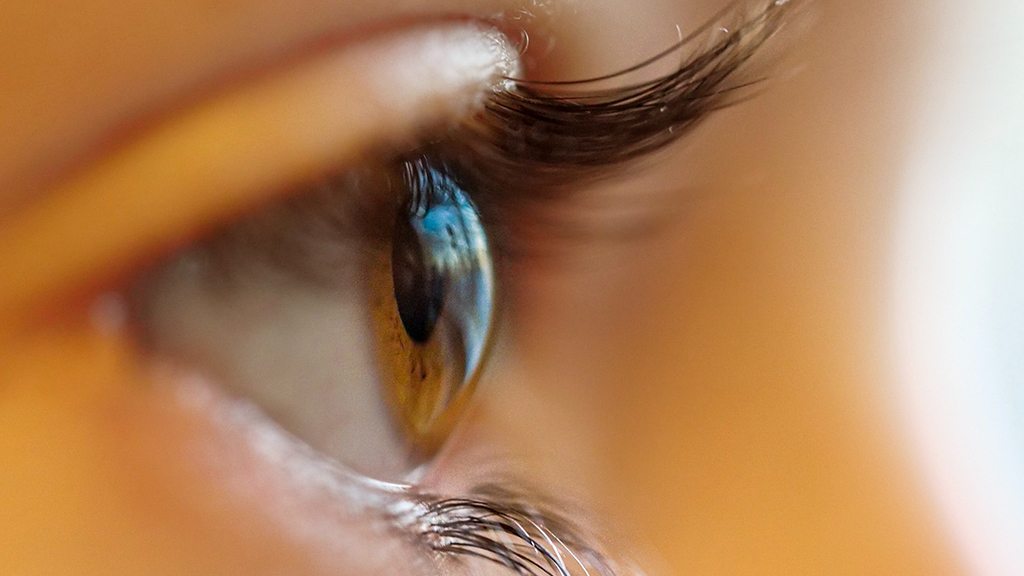MoCoTo: the mobile app for custom-made contact lenses
The app allows a mobile phone to be used as a corneal topographer, a device used in ophthalmology to calculate the shape of the cornea in order to adapt a person's contact lenses to their eyesMoCoTo is the first mobile topographer to calculate the shape of the cornea
It can be used to detect corneal diseases and even monitor corneal lesions

If every eye is different, it is only logical for contact lenses to be made to measure. In practice, however, this is often not the case, which leads people to stop using them. According to a study published in the journal Contact Lens Spectrum, one in every four standard soft contact lenses cannot provide an optimal fit based on corneal diameter alone. David Merino, the creator of MoCoTo, agrees: "A quarter of contact lens wearers stop wearing their contact lenses because of discomfort brought about by a bad fit."
Merino, who is a researcher for the Scene Understanding and Artificial Intelligence Lab (SUNAI), research group of the eHealth Center and the Faculty of Computer Science, Multimedia and Telecommunications, was a finalist in the ninth edition of SpinUOC, the Universitat Oberta de Catalunya's (UOC) entrepreneurship, innovation and knowledge transfer event coordinated by the Hubbik platform.
Made-to-measure contact lenses
The lens is in contact with the cornea, which is a spherical surface. When designing it, this curvature must be taken into account so that it fits well. "Only a few opticians have equipment that allows them to customize contact lenses. The idea is for this mobile phone-based topographer to be made available to all these opticians at a more affordable price, under a thousand euros," he said. How does it work? It consists of an accessory, similar to a camera lens, which fits onto the back of a mobile phone and is used to illuminate the eye. Using an app, the mobile phone takes a photo of the reflection of light on the cornea and calculates its shape. "This allows the optician to personalize the contact lenses of each client and therefore offer them a better product," he said.
Marta Massip, a researcher at the UOC's Faculty of Health Sciences, and Miguel Merino, the project's mentor and a member of staff at the optician Cottet, also collaborated in the development of MoCoTo.
Diagnosing diseases
Corneal topography can be used to detect corneal diseases and even monitor corneal lesions. "It is mainly used to diagnose keratoconus, a very prevalent disease that affects the internal structure of the cornea, causing deformation and affecting vision. In the last decade, a treatment has been developed that helps to slow the progression of this disease," explained David Merino.
Although the product is aimed at opticians, according to the researcher, they also plan to explore other uses in the future. One such use could be patients monitoring diseases that they have been diagnosed with. MoCoTo, being a portable device, can be taken to remote areas and reach people with mobility problems.
This research contributes to achieving Sustainable Development Goal (SDG) 3, Ensure healthy lives and promote well-being for all at all ages.
UOC R&I
The UOC's research and innovation (R&I) is helping overcome pressing challenges faced by global societies in the 21st century, by studying interactions between technology and human & social sciences with a specific focus on the network society, e-learning and e-health. Over 500 researchers and 51 research groups work among the University's seven faculties and two research centres: the Internet Interdisciplinary Institute (IN3) and the eHealth Center (eHC).
The United Nations' 2030 Agenda for Sustainable Development and open knowledge serve as strategic pillars for the UOC's teaching, research and innovation. More information: research.uoc.edu. #UOC25years
Experts UOC
Press contact
-
Editorial department
